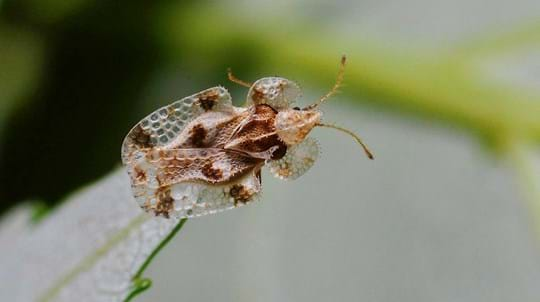
Pests and diseases
Oak Lace Bug
An insect pest that attacks oaks.

Lead Trainer Observatree- Forest Research
Between June and October last year many of our wonderful volunteers took part in a lace bug survey to help us to determine whether the oak lace bug (Corythucha arcuata) and the plane lace bug (C. ciliata) were present in the UK.
These non-native invasive insect pests were introduced into Europe from North America and are established in many European countries but are not thought to be currently established here, however they have been intercepted in, and eradicated from Bedfordshire in the past.
These pests can have a significant impact on the health of oak and plane trees as well as making infested trees more vulnerable to other pests and diseases and less able to cope with environmental stress.
Volunteers were provided with sticky traps and instructions on how and where to position them and before long the traps started appearing in oak and plane trees throughout England, Wales and Scotland.
Traps were left in the trees for 2 weeks during the summer and autumn before being retrieved and sent to Forest Research along with associated information on location and tree species.
We were really pleased that so many of the volunteers participated in this task and impressed with their high level of interest and engagement. 43 volunteers took part in the survey, just under a third of the volunteer network, and between them they sampled 130 trees nationwide; 103 oaks and 27 plane.
Forest Research entomologist Dr Dave Williams scanned the returned traps and was pleased to report that no oak or plane lace bugs had been found during this initial survey.
A lace bug wing was found on one trap (the rest of the insect had been dislodged!) and after consultation with fellow entomologists the wing was identified as being from a native lace bug species (Derephysia foliacea) that feeds mainly on ivy. Although this wasn’t the bug that we were looking for, at least it demonstrated that the traps were actually fit for purpose.
The volunteers were brilliant in that they provided us with great quality data and in virtually all cases the task instructions were followed very closely, which meant that we obtained all the information that we asked for!
A big thank you to the Observatree volunteers for doing such a good job for us and to everyone else who was involved and we hope that they will be just as engaged and enthusiastic for this year’s lace bug survey!